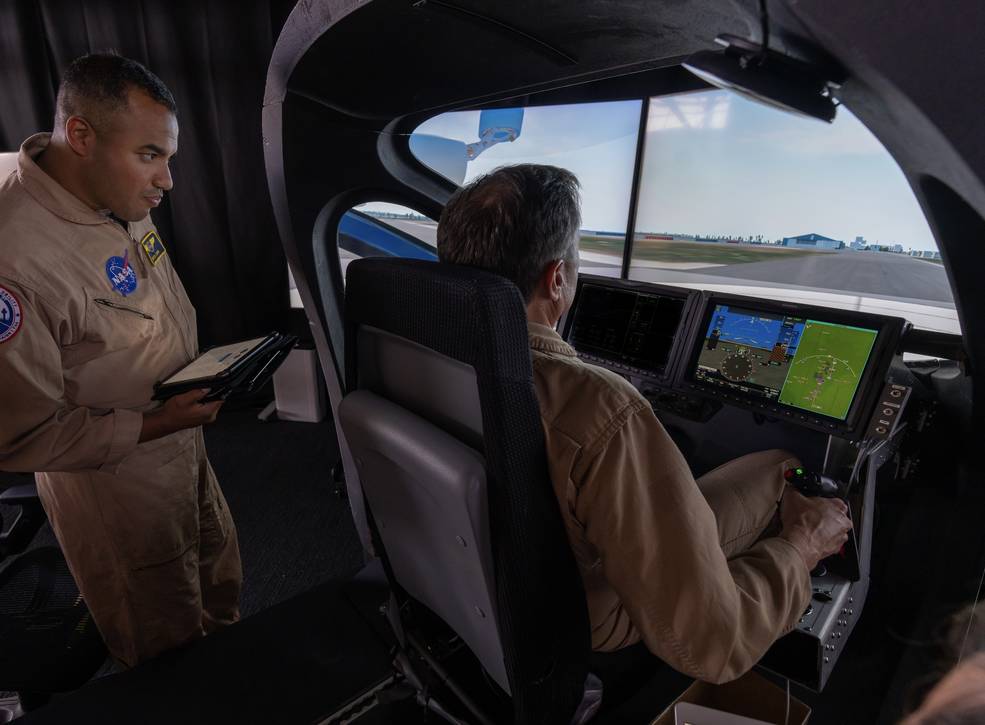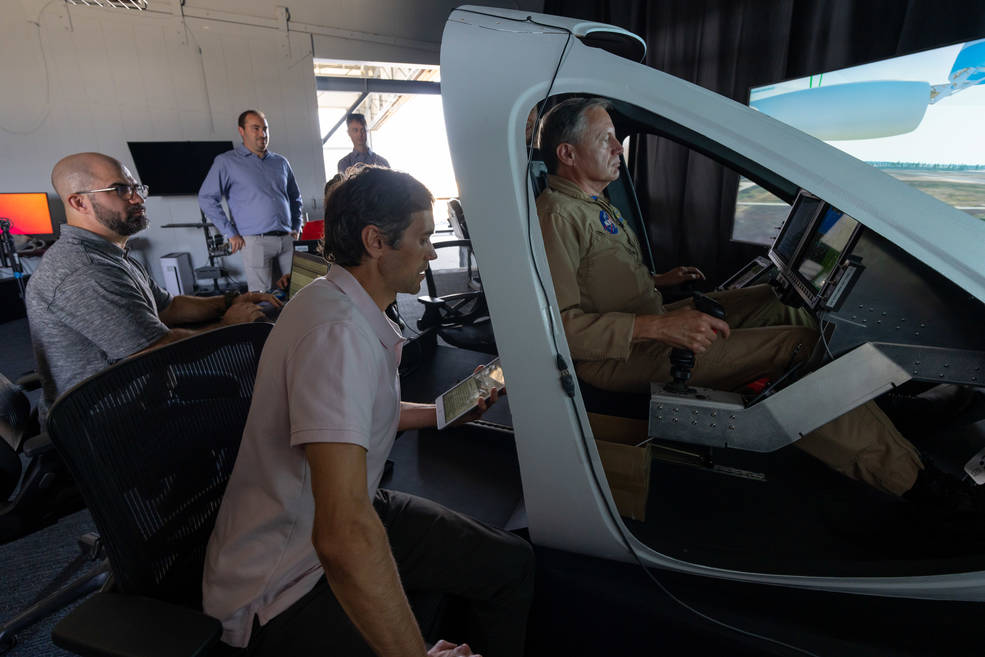
Aviation experts at NASA are preparing the tools that will be needed for safe and easy navigation of future air taxis and drone services, and to facilitate that work they’ve teamed up with advanced air mobility (AAM) aircraft developer Joby.
Pilots and flight engineers with NASA’s AAM National Campaign have been using Joby’s air taxi flight simulator to gather data that will be integrated into a wide range of tech aiming to facilitate future operations and integrate passenger craft and autonomous drones into the nation’s airspace. The span of planned capabilities covers complex systems aiding traffic management to those allowing next generation craft to navigate pre-assigned flight routes as if following instructions on a smartphone app.
Read: Zipline and NASA to envision future delivery drone and AAM flight
Though Joby is developing its S4 air taxi as a piloted craft carrying up to four passengers, NASA’s AAM team is largely focusing on future tools to enable secure automated activity of both larger crafts and drones.
In doing so, NASA staffers are using Joby’s AAM flight simulator, which is equipped with joystick controls, avionics, and performance modeling that replicates the experience of flyinh the company’s S4 air taxi.

Four different pilots have used the testing asset to imitate trajectories along designated waypoints, with data collected along the way permitting analysis and determination of optimal maneuvers for obstacle avoidance, route efficiency, passenger comfort, and noise reduction.
Increased awareness of and experience with the way Joby air taxis, other AAM aircraft, and self-flying drones will operate once aloft will also permit the development of potential departure, approach, and missed approach scenarios, as well as obstacle avoidance maneuvers.
Use of Joby’s air taxi simulator is also permitting the NASA AAM team to experiment with a new flight path concept known as deproach. Under that, an aircraft can travel in multiple directions while flying between its points of departure and arrival, and has to deviate from its designated flight path in response to potential air restrictions or obstacles.
“You can think of a deproach as a circular traffic profile which consolidates departure, approach, and missed procedures in a way current airspace models don’t account for,” explains David Zahn, a NASA pilot leading the project’s work on the Joby simulator. “The ability to explore this new model and help streamline the process of reaching specific vertiports is an example of the value of these simulations.”
Read: Archer nearing completion of its first production eVTOL air taxi
The project aims to establish basepoints of altitude, maneuverability, and ride quality for future tests, and identify the best operating practices for AAM vehicles. In addition, NASA says it will be using data from the simulator trials to produce autopilot code, and navigation information specific to air taxis for use in airborne navigation system databases.
Photos: Joby Aviation
FTC: We use income earning auto affiliate links. More.



Comments